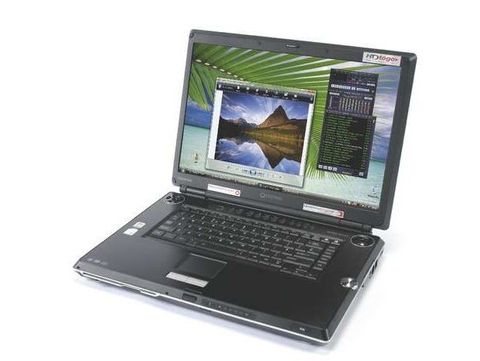TechRadar Verdict
It's as good as it gets for high definition video playback
Pros
- +
17in 1920 x 1200 native resolution screen
Superb sound quality
Cons
- -
Bulky and difficult to transport
Why you can trust TechRadar
Controversial digital rights management technology, confusing codec conundrums and a litany of missed launch deadlines - it's been an inauspicious start for HD-DVD, the new high definition video technology developed by a group of companies headed by Toshiba.
Of course, the launch of Sony's competing Blu-ray platform has hardly been a picture of 1080p perfection. In the UK, in particular, the long wait for both technologies has thoroughly taken the fizz out of the arrival of HD video drives. It's not altogether surprising, then, that the first fully functional HD-DVD system to appear at PC Plus towers is a painfully pricey £2,000 notebook computer, rather than a more practical desktop system.
That said, Toshiba's new HDDVD- enabled Qosmio G30 laptop comes close to living up to the desktop replacement maxim. It's a massive machine by any measure, sports a pair of 120GB hard disks, a hybrid DVB-T/analog TV tuner and the complete Windows Media Center package including a full-function IR remote. Then there's a 17in widescreen display with a huge native resolution of 1,920x1,200.
What's more, it's complemented by an Nvidia GeForce Go 7600 graphics chip. With eight pixel pipelines, it's a resolutely mid-range GPU in terms of 3D performance. But courtesy of Nvidia's PureVideo hardware video engine, which is capable of providing decode acceleration for all three of the key codecs in the HD-DVD specification (MPEG2, VC-1 and H.264), it's as good as it gets for high definition video playback.
Other plus points include the superb sound quality from the embedded Harmon Kardon speakers, an HDCP-compliant HDMI videoout port for HD-DVD output to big screen TVs and projectors, and the decadent quality of the brushed black-anodised alloy chassis fascia and large hi-fi inspired volume controller.
Weighty matters
It is not, however, perfect. For starters, it's ludicrously heavy. Toshiba quotes 4.8Kg. But once ensconced along with a gaggle of cables, adaptors and the beefy power supply in the admittedly impressive leather carry case, it feels like twice that. In short, it's far too bulky for a daily commute to work.
However, the G30 suffers from several less forgivable shortcomings. Most of all, there's a whiff of underdevelopment surrounding the HD-DVD drive and its supporting software. The overall playback experience is rather laggy, frustrating and recalcitrant, with the drive taking an age to recognise HD-DVD movie discs. It's not helped by the tedious and infuriating movie intro sequence that cannot be skipped.
There's essentially no headroom to spare for any remotely CPU-intensive applications to run simultaneously. Making matters even worse, frequent system lock ups during HD-DVD playback only add to the impression of a halfbaked technology in need of a final polish. For £2,000 we expect better.
Nevertheless, once up and running the HD-DVD experience is extremely compelling. Using our imported Training Day test disc - HD-DVD does not currently utilise region encoding - the image quality on the 17in Tru-Brite LCD panel is positively packed with detail. Denzel Washington's every pore and sinew is reproduced with astonishing fidelity, even the finest super-bit DVDs do not come close.
We just have space for a final word of warning. Despite a reasonably healthy line of UK HD-DVD movie releases announced at the recent IFA consumer electronics fair, there's no denying the fact that Blu-ray remains the favoured format for a majority of film studios. Purchase this and it's inevitable that you'll suffer the ignominy of some of your favourite films released only on Blu-ray. Jeremy Laird

